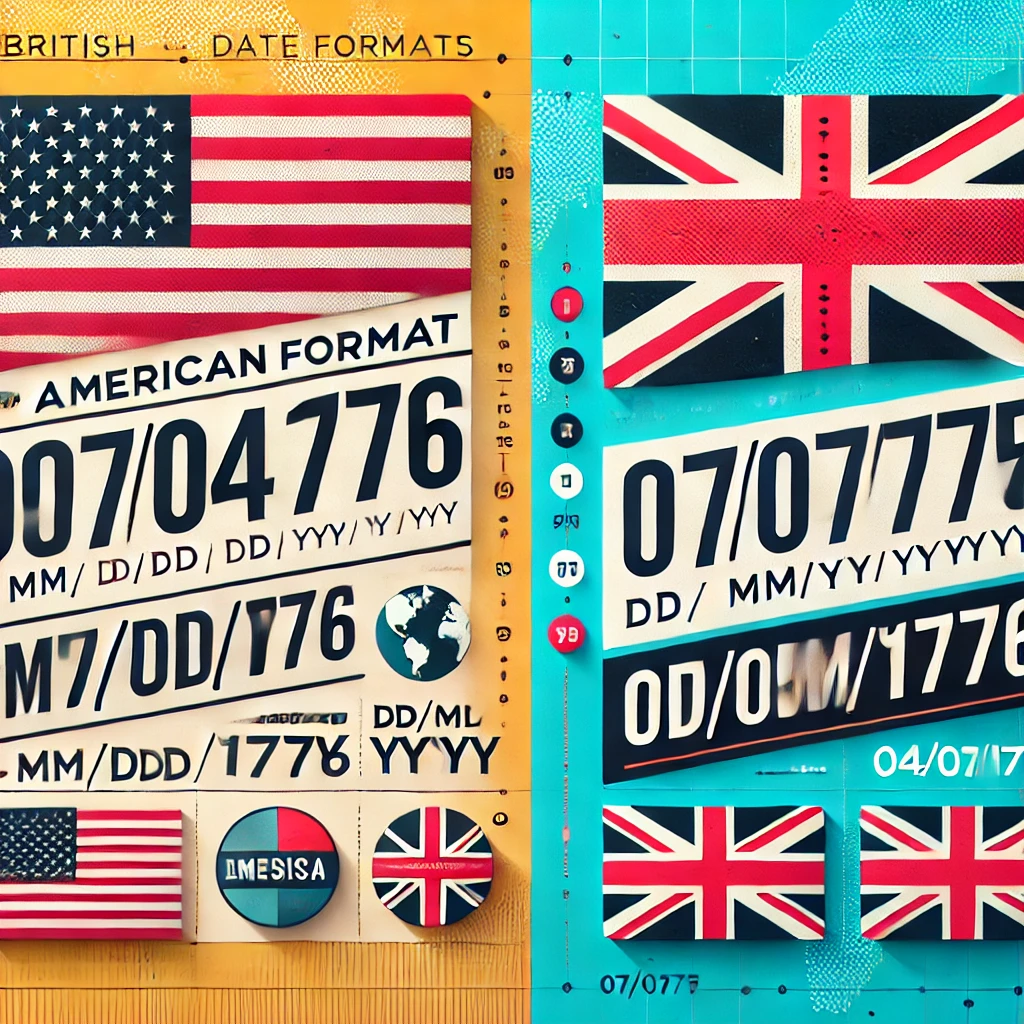How British and American People Write Dates: A Tale of Two Styles

You never realize how much you take something for granted until you see someone do it differently. Case in point: dates.
I was helping my kid with a history assignment the other day when I noticed the textbook had a date written as 4/7/1776. Without even thinking, I read it as April 7th. But then, a little voice in the back of my head—probably the same one that reminds me I left the laundry in the washer overnight—told me to double-check. Turns out, the book was printed in the UK, which meant that date was actually July 4th.
Cue a minor existential crisis. How many times had I misunderstood a date without even realizing it? And more importantly, why do Americans and Brits insist on doing this differently?
The American Way: Month, Day, Year
In the U.S., we write dates as MM/DD/YYYY—month first, then day, then year. So, July 4th, 1776, is 07/04/1776 (cue the fireworks). This system is used on everything from driver’s licenses to baseball tickets. It’s so ingrained that we don’t even question it—until we encounter the rest of the world.
Americans tend to focus on the month first because it helps frame the date in a more immediately recognizable way. If I tell you something is happening on 07/04, you instantly know it’s July, even before I get to the day. It’s almost like a mental shortcut—until, of course, you have to explain it to someone outside the U.S.
The British (and Almost Everywhere Else) Way: Day, Month, Year
Meanwhile, the UK (along with most other countries) writes dates as DD/MM/YYYY—day first, then month, then year. That means their version of American Independence Day would be written as 04/07/1776 (which, to an American, looks like April 7th). Confusing? Absolutely. But to them, our format is just as baffling.
This method follows a logical progression: smallest unit (day), medium unit (month), largest unit (year). It’s the same order you’d use when talking about time—hours, then minutes, then seconds. In that sense, the British method feels more structured, like counting from one to ten instead of jumping around randomly.
But Why Do We Do It Differently?
Blame history, convenience, and a little bit of stubbornness.
The American format actually traces back to early U.S. documents, where month-first dating was sometimes used for clarity. Over time, this became the standard, especially with the rise of official forms and government paperwork. Some historians suggest it was influenced by the way people naturally spoke—saying “July 4th” rather than “the 4th of July.”
The British system, on the other hand, aligns with the way many European countries write dates. It’s logical, structured, and widely used—except in the United States, because, well, America does its own thing.
So, Who’s Right?
Technically, neither. It’s just a matter of convention. But if you ever find yourself booking flights, making international plans, or deciphering a cryptic text from your British friend, double-check that date. Otherwise, you might just show up three months late to your own vacation.
For a hilarious take on this date format confusion, check out this TikTok:
